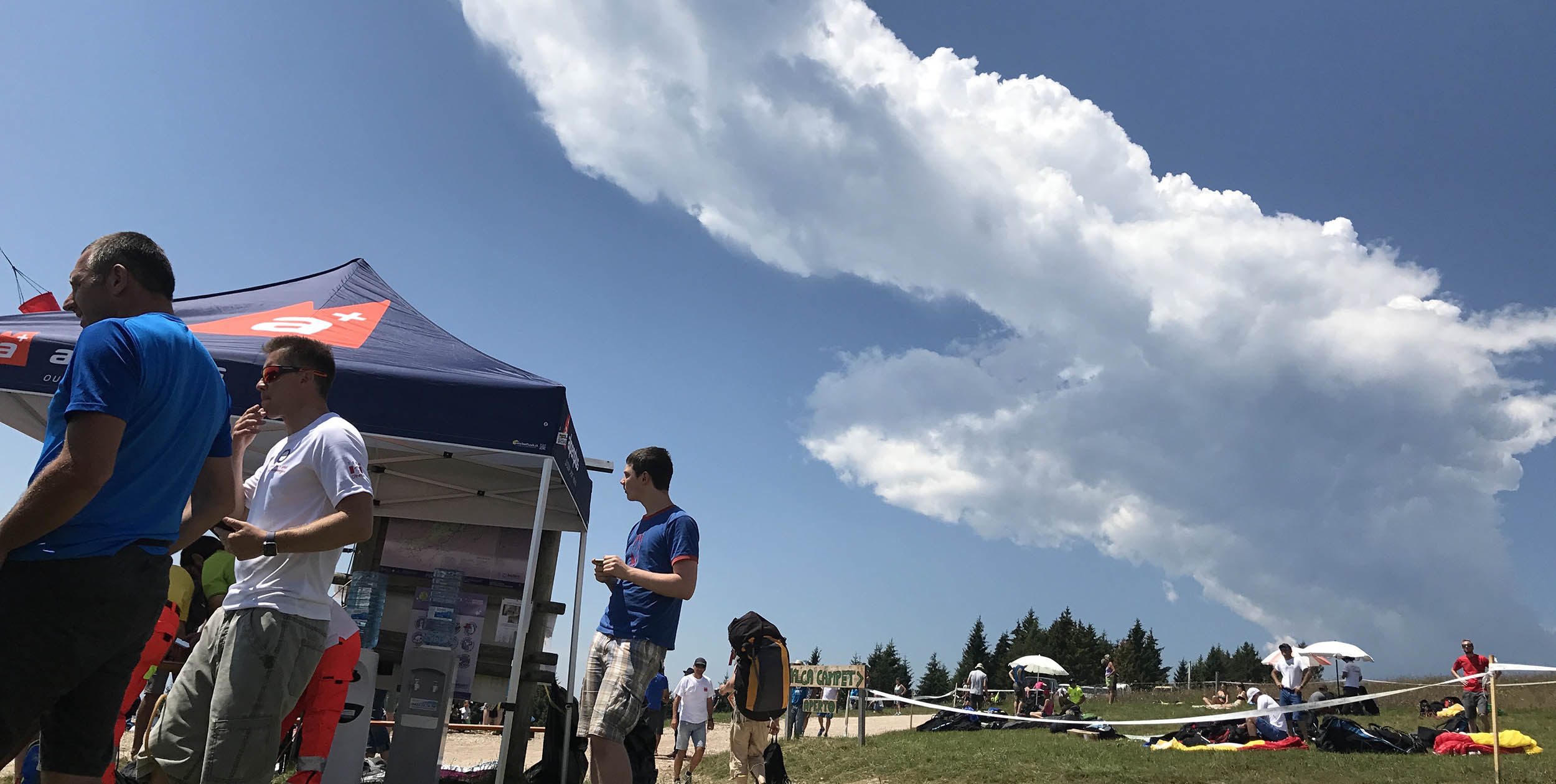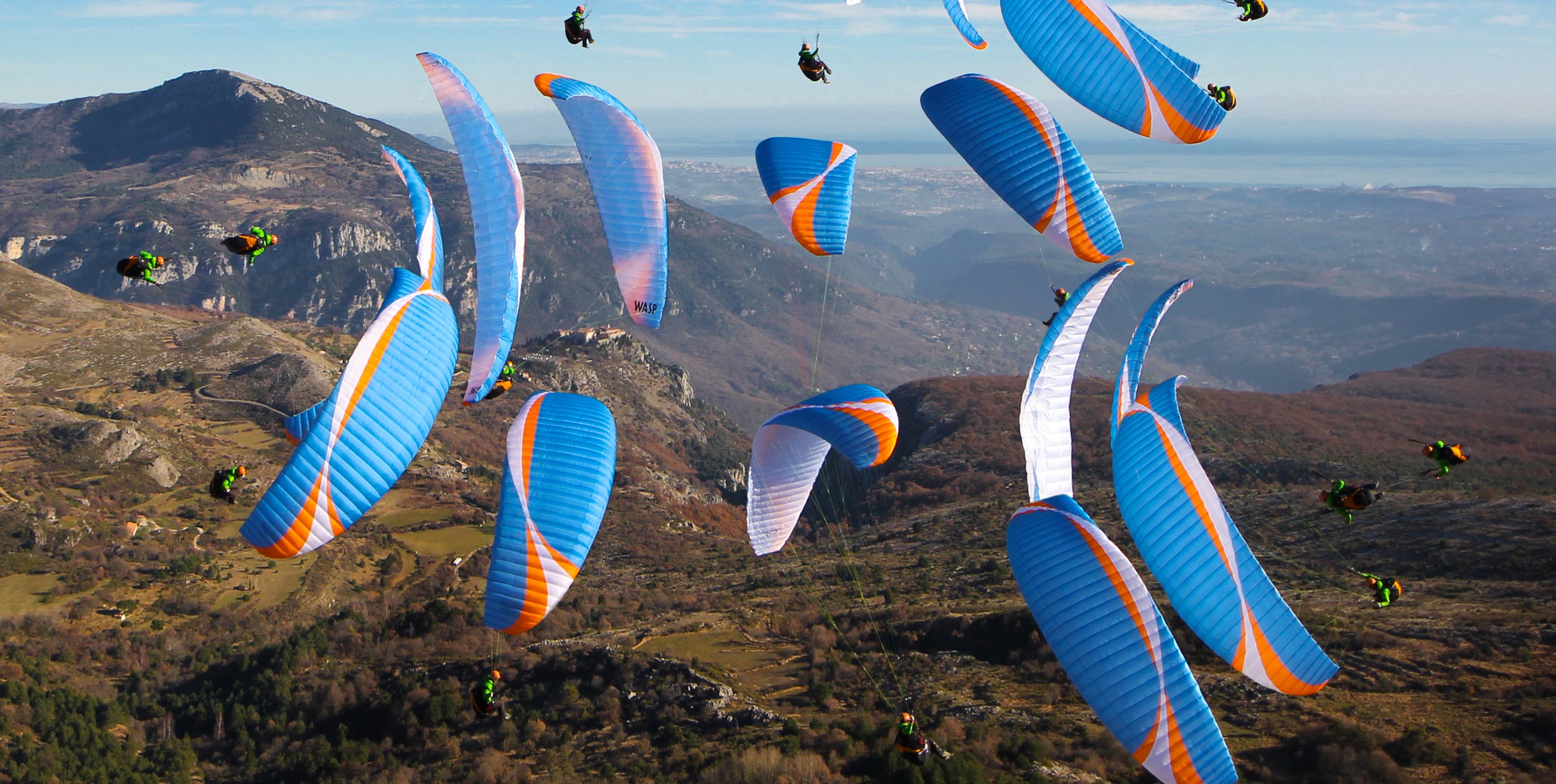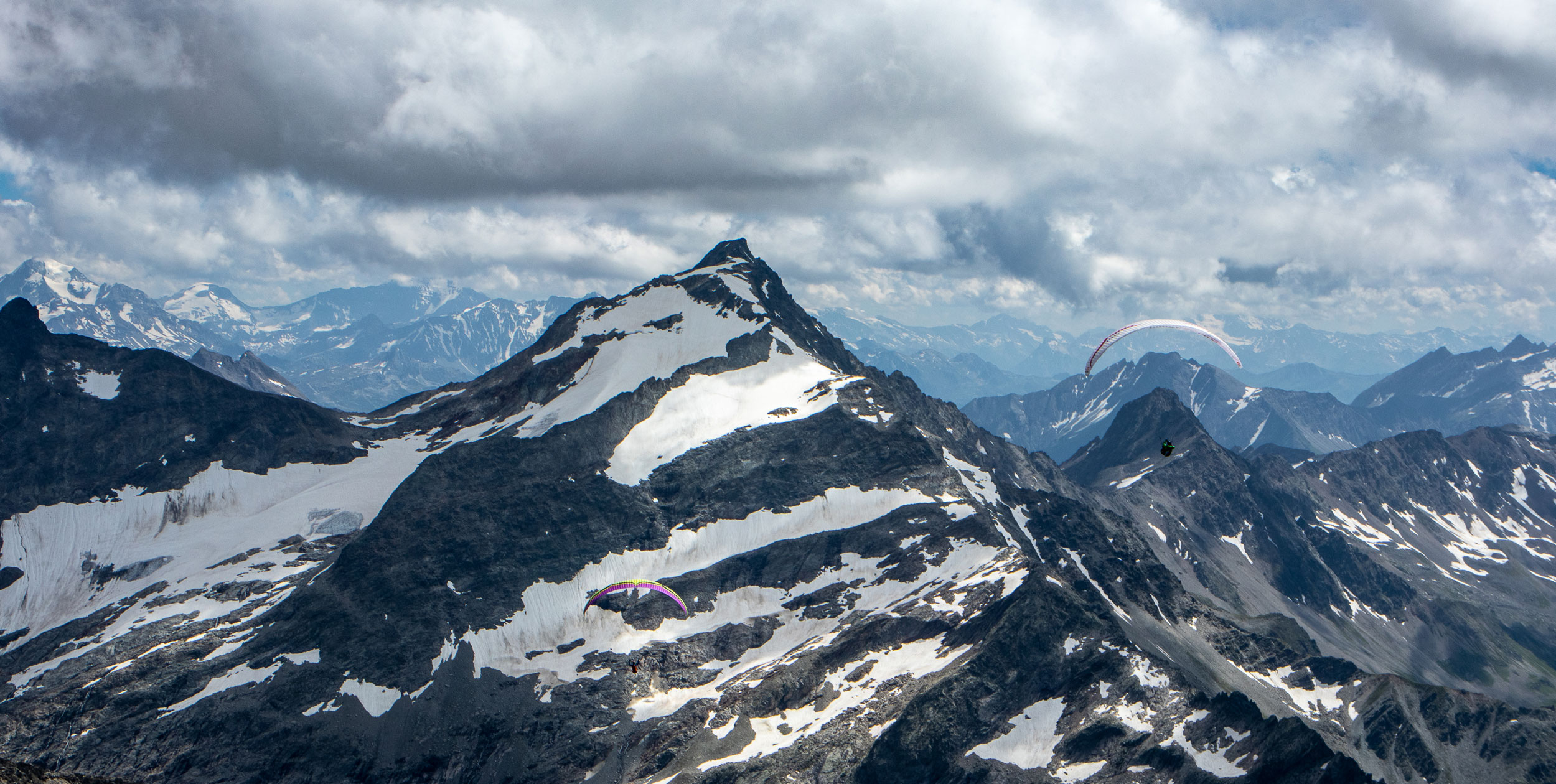
Bruce Goldsmith brings us up to date on glider behaviour during full frontals. Published in issue 98 of Cross Country magazine
THE SIMPLE ANSWER
A full frontal collapse is basically the same as an asymmetric collapse, but instead of the collapse being on one side of the glider and progressing towards the middle, a full frontal collapse progresses outwards from the centre of the wing towards both tips. This type of collapse can be so big that it even takes out the entire leading edge of the glider from tip to tip.
In a full frontal collapse, the wing will usually collapse and reinflate before you’ve realised anything has happened. Normally, no pilot action is required – even on high performance wings.
LIFE’S NOT ALWAYS THAT SIMPLE
Having said that, we do need to go into some more detail. During the fraction of a second the wing is actually starting to collapse, and if your reactions are both fast and instinctive, it is possible to use active piloting and briefly apply brake so as to stop the wing from collapsing.
Once it has collapsed however, you should avoid applying brake as this often results in a full stall. If you do apply the brakes, then the timing of the brake application as well as the amount of brake applied are of extreme importance.
Once the glider has collapsed the wing will momentarily fall back and then return to its normal position above the pilot’s head. As this happens, a few cells at the centre of the wing start to catch the airflow and the glider should begin to reinflate progressively from the middle of the wing.
During this stage of the recovery, many wings will enter a deep stall phase when the wing is falling vertically even though the wing, and the leading edge, may be almost fully open again. During this stage it is highly advisable not to apply the brakes.
Even more important than not applying any more brake, is the fact that the brakes must be fully released. If they are not fully released, with your hands all the way up, the wing may not recover at all from this deep stall phase.
Certified gliders should recover from this deep stall phase within a couple of seconds and smoothly and quickly return to normal flight. In most cases the pilot won’t even notice this transitory deep stall phase.
There are circumstances however, (if the glider is old, porous, if the lines have stretched or shrunk, or, if the pilot is out of the weight range) where gliders may not recover as they should and the wing may remain in a deep stalled state.
If this happens, a quick pump on the brakes will rock the glider back, and when you release the brakes, the glider will surge forward and recover. You must, though, be ready to catch the wing if it surges too far forward, or you will immediately end up with another front collapse…
• Got news? Send it to us at news@xccontent.local
Subscribe to the world’s favourite hang gliding and paragliding magazine







